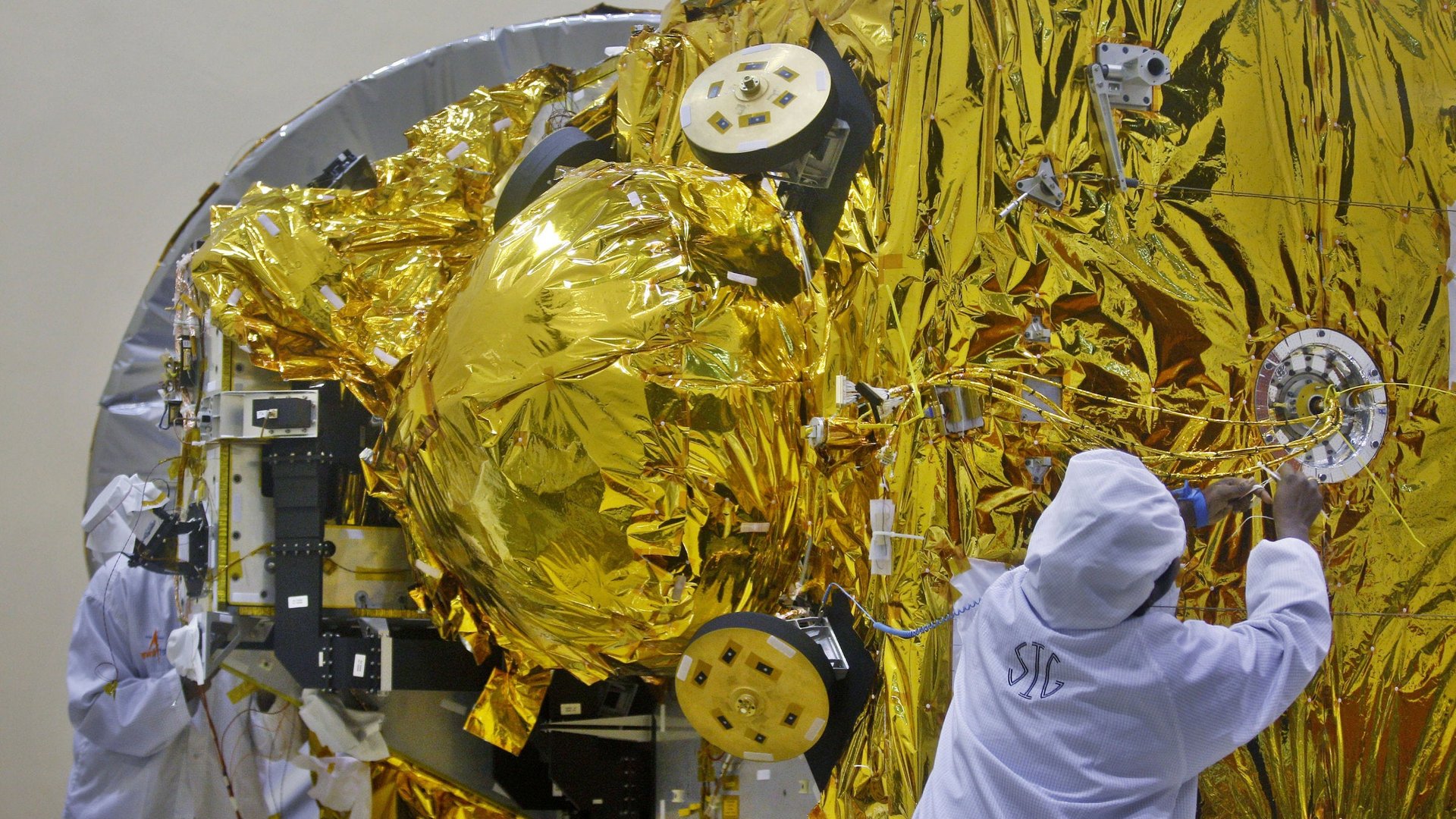India’s upcoming mission to Mars is a chance to best Russia and China
If all goes according to plan, on Nov. 5 India will celebrate a successful liftoff of its first Mars-bound space mission, the Mangalayaan, or Mars Orbiter Mission (MOM). Designed by the Indian Space Research Organization (ISRO) as a test of the country’s space technology and ability to orbit a craft around Mars, MOM will be a significant landmark for India as it seeks to one-up its regional neighbors Russia and China in their recent quests to get to (or back to, in Russia’s case) the red planet.


If all goes according to plan, on Nov. 5 India will celebrate a successful liftoff of its first Mars-bound space mission, the Mangalayaan, or Mars Orbiter Mission (MOM). Designed by the Indian Space Research Organization (ISRO) as a test of the country’s space technology and ability to orbit a craft around Mars, MOM will be a significant landmark for India as it seeks to one-up its regional neighbors Russia and China in their recent quests to get to (or back to, in Russia’s case) the red planet.
India’s would be the fourth space program to successfully reach Mars, after Russian, US and joint European programs. Russia and China’s most recent attempt, a joint launch in November 2011, failed to leave Earth’s orbit shortly after takeoff, leaving the countries’ respective Fobos-Grunt and Yinghuo-1 probes stranded in Earth’s atmosphere until they were ultimately destroyed on re-entry. Observers have suggested that India accelerated its Mars effort after the Sino-Russian failure last August, with Prime Minister Manmohan Singh announcing the mission during a speech the following day as part of a broader slate of economic initiatives.
MOM’s launch will start the clock on a 300-day mission to Mars that is costing an estimated 4.5 billion rupees (around $75 million), to orbit, but not land, studying the planet’s atmosphere. The event itself, originally scheduled for Oct. 28, was pushed forward due to weather delays that slowed proper positioning of satellite tracking ships in the South Pacific. The spectacle will take place at the ISRO’s east coast Satish Dhawan Space Centre at Sriharikota, an island just northeast of Chennai.
Critics have attacked spending so much on space exploration while the country suffers basic infrastructure problems. In a recent interview with The Hindu, ISRO chairman K. Radhakrishnan defended the costs, saying his organization represents only one-third of 1% of the national budget, and of that, the budget for scientific and planetary exploration is only 7-8%, with most ISRO money going to its satellite program. By contrast, NASA’s Curiosity rover program is estimated to have cost the US $2.5 billion to date.
ISRO’s next mission is already being planned with the Chandrayaan-2, its second major lunar mission, and first to include a possible lander and rover, similar to NASA’s Mars rover. Initial plans had called for a joint launch with Russia, but following the 2011 failure, ISRO has said it is now planning to carry out the launch itself. Targets for a manned Indian lunar mission now sit out beyond 2020.